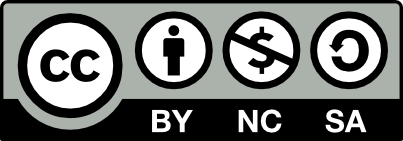/ Riot and strike: the protest of the poor dominicans
Downloads
Abstract
Examining the social movements that have occurred in recent years in the Dominican Republic is valuable in itself, while allowing consideration of aspects of the more general historical trends. These movements, in effect, are inscribed in various levels of structural change, such as the transition from a weakly modernized type of agro-export economy to one supported by services linked abroad. Politically, they can be considered as a counterpart of the democratic order, evidence of the practical limits of their assumptions in the political system, both with regard to the representation by the parties of the interests of the population and the fact that they are the ideal channel of communication. negotiation with the state.
Keywords:
strike, Job issue, Dominican RepublicReferences
Centro de Estudios de la Educación, Otro abril de lucha popular, (mineo), Santo Domingo, (1984).
Centro de Investigación y Documentación Social, Crisis y movimientos populares en la República Dominicana, Santo Domingo, 1984.
Dore, Carlos, «¿Por qué se produjo abril de 1984?», Impacto Socialista, 2a. época, no. 2 (1 985).
Pérez, César y Artiles, Leopoldo, Movimientos sociales dominicanos. Identidad y dilemas, Santo Domingo, 1992.
Ruiz B., Víctor E., Lucha social y movimiento sindical en la República Dominicana. Agosto de 1990-julio de 1991, Santo Domingo, 1992.
Tejada, Darío, «Movimiento popular, huelga general y coyuntura» El Siglo, 30 de diciembre de 1989.
License
Copyright (c) 1995 Journal ECOS UASD

This work is licensed under the Creative Commons Attribution-Noncommercial-NoDerivs 4.0 International license. https://creativecommons.org
Most read articles by the same author(s)
- Roberto Cassá, Pedro l. San Miguel, The Dominican Peasantry And The Market Economy: The Peasants of the Cibao, 1880-1960. Doctoral thesis in history at Columbia University, 1987. 401 p. , Journal ECOSUASD: Vol. 1 No. 1 (1993): ECOSUASD
- Roberto Cassá , Hugo Tolentino. The myths of the Fifth Centenary. Holy Domingo, Editora Alfa y Omega, 1992. 165 p , Journal ECOSUASD: Vol. 1 No. 2 (1993): ECOS
- Roberto Cassá , Bernardo Vega. Trujillo and the US Armed Forces. Santo Domingo, Dominican Cultural Foundation, 1992. 520 p , Journal ECOSUASD: Vol. 1 No. 2 (1993): ECOS
- Roberto Cassá , The tragic epic , Journal ECOSUASD: Vol. 5 No. 6 (1997): ECOS
- Roberto Cassá , Summary biographies of Santo Domingo's deputies in the Spanish Parliament , Journal ECOSUASD: Vol. 20 No. 12 (2013): ECOS
- Roberto Cassá, Andrés L. Mateo. Myth and Culture in the Era of Trujillo. Holy Domingo, Editora de Colores, 1993. 217 p , Journal ECOSUASD: Vol. 1 No. 2 (1993): ECOS
- Roberto Cassá, Jorge Ibarra. Cuba: social classes and political parties, 1898-1921. The Havana, social sciences editorial, 1992. 478 p. , Journal ECOSUASD: Vol. 1 No. 1 (1993): ECOSUASD
- Roberto Cassá , Bernardo Vega and Emilio Cordero Michel (eds.). Business Dominicans in English archives. Santo Domingo, Foundation Cultural Dominicana, 1993. 208 p , Journal ECOSUASD: Vol. 1 No. 2 (1993): ECOS
- Roberto Cassá , Emelio Betances, state and society in the Dominican Republic , Journal ECOSUASD: Vol. 4 No. 5 (1996): ECOS
Similar Articles
- Raymundo González, Peña Batlle and its historical concept of the dominican Nation , Journal ECOSUASD: Vol. 2 No. 3 (1994): ECOS
- Jorge lbarra Cuesta, Cuba: structure and social processes , Journal ECOSUASD: Vol. 3 No. 4 (1995): ECOS
You may also start an advanced similarity search for this article.









